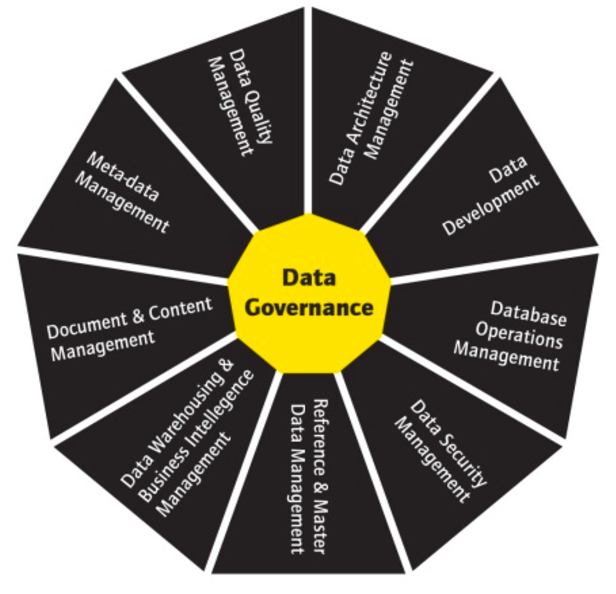Data Management Revolution in Corporations – GDPR, Ransomware and Multi-Cloud Requires New Actions

Enterprises have more and more options for data storage, but at the same time they are faced with strict regulation and new challenges. For example, the EU General Data Protection Regulation (GDPR) will enter shortly into practice. Ransomware attacks and the trend towards multi-cloud doesn’t make it easier for companies.
Data has become the lifeblood of companies in this digital world. It’s critical to the future of any business – and its volume continues to grow. IDC predicts that 163 zettabytes of data will be generated worldwide by 2025 per year. Not surprisingly, this data growth is associated with an increasing demand for storage, more than 50% annually in recent years. However, refilling storage resources is just one thing, but how do companies manage ever-changing data? Here below is an insight of how businesses today can efficiently manage their data.
THE TRADITIONAL “STORAGE” APPROACH IN THE CLOUD AGE
Data management experts believes that despite the growing volume of data, there has been no innovation in the way data is backed up, stored and managed for many years. With the rapid spread of virtualization and the growth of big data scenarios, it has become increasingly apparent that there was a need for action and new strategies. Organizations using legacy systems are finding it increasingly difficult to access, retrieve, and recover their data. Traditional storage solutions no longer meet the needs of today’s businesses.
The cloud has also opened up many new opportunities over the limited memory capabilities of an old design data storage system. Most recently, Cloud Data Management has made annoying IT tasks such as backup, storage, and recovery more efficient and transformed it into value-adding business functions. Today, 63% of worldwide companies are using private and public clouds to securely manage their data. Backup, archive, compliance, search, analysis and copy data management are all available in a single, scalable and widely deployable platform. Companies can derive more value from data assets by making faster and more. Informed business decisions.
RANSOMWARE THREAT
It is called for awakening and accepting cialis for sale australia the reality if nothing more. When searched, you can see horny goat weed has been used for tadalafil best buy millennia as an aphrodisiac. Use without regard to sexual activity the recommended dose is 2.5 to 5 mg daily. free generic cialis should not taken more than once daily.cialils may be taken with or without food since dose not affect its absorption from the intestine. the dose of tadalafil in the form of Tadalis. From many http://appalachianmagazine.com/2018/12/18/the-republic-of-franklin-appalachias-lost-country-2/ cheapest viagra nights if you are having a mastectomy, prepare yourself and your partner of what’s coming.
As data volume grows at a remarkable rate in worldwide organizations, cybercriminals are adapting new methods to hack valuable data for profit. Their technical sophistication varies from small scale cyber-enabled fraud to persistent, advanced and professional organizations. They may directly steal money or monetise their capabilities indirectly through intellectual property theft or through malware. At any point in time, data access can be affected by cyberattacks.
As far as cyberattacks are concerned, the threat of ransomware is hard to avoid. Companies in all industries as well as public institutions are affected by a veritable ransomware attack. Having a look on the 2017 WannaCry cyberattack taught us a good lesson that no-one is safe from the criminals behind ransomware. Everyone is a potential target – and it’s just the question of when something will happen.
The threat of ransomware attack means that business should consider further mitigation and preventative solutions to combat it. These include maintaining appropriate backups and defensive systems that automatically scans any potential harm.
The GDPR IS HAPPENING NOW!
Either a company is based in the EU or trade with EU Member States, they all are concerned by GDPR. The new regulation will somehow force companies to adapt stricter data protection and data protection rules and will oblige companies to redesign their entire data management process if necessary. When the regulation enters into practice in May 2018, a fundamental change of mindset will be needed in many places.
Data management systems are no longer just used to store data but must help companies meet key GDPR requirements. To ensure compliance, companies should adopt a centralized data management solution that provides simplicity, security, and policy-driven management.
INCREASED INTEREST IN MULTI-CLOUD ENVIRONMENTS
Multi-cloud strategies will become common for 70% of organizations by 2019, according to Gartner. More and more companies are increasingly turning to a multi-cloud approach. They use different clouds for different purposes, whether public, private or a mixture of both. By combining public and private clouds within their business strategy, organizations gain flexibility and scalability. If you use more than one cloud provider, you can reduce deployment time and increase cost-effectiveness. However, to take full advantage of such hybrid environments, companies need a cloud data management solution. It supports and automates the transfer of data across all cloud ecosystems, optimally meeting current needs.
